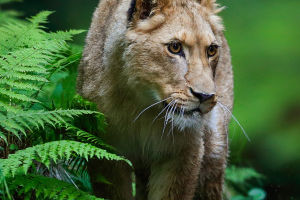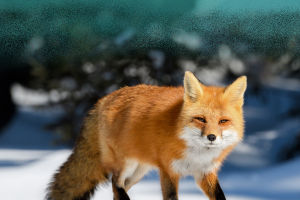The lynx is mainly found in Canada, but also sporadically in the northern United States and Mexico, adapting to a variety of habitat types.
Including all kinds of forests, shrubs, low forests, grasslands, and semi-desert areas, as long as there are shelter conditions, they can survive well.
The lynx is a medium-sized beast.
The weight is about 25-55kg, and the body length is about 80-130CM.
The fur on its back is the thickest, with spots or stripes attached to it in varying degrees, which is conducive to its predation.
Living habits.
Temperament.
The lynx has a cunning and cautious temperament.
When in danger, it will quickly flee to the tree to hide, and sometimes lie on the ground and play dead to avoid enemy attack and injury.
Food.
The main food of lynx is snow rabbit and other hares, so in many places.
The number of lynx will fluctuate with the increase or decrease of the number of hares, and there will be a peak every 9 to 10 years.
Natural enemy.
In nature, tigers, leopards, snow leopards and other large beasts are the natural enemies of lynx.
If you encounter a pack of wolves, you will be closely chased and surrounded, and it is generally difficult to escape.
Prey.
It can stay in one place for days and nights in order to catch food.
Once a prey is approaching, it will rush out unprepared to successfully capture the prey, and then enjoy a beautiful feast.
Survivability.
It has a strong anti-starvation ability, and it can stay quietly in one place for several days, not afraid of severe cold.
The lynx is not as famous as the big cats such as tigers and lions, but in terms of survivability.
The lynx is no less than a tiger lion, or even a tiger lion. Is a well-deserved master of natural survival.
Breed.
The mating season for lynx is March and April each year.
The gestation period is about two months, and each litter produces 2 to 4 pups.
Population status and threats.
The decline in lynx numbers can also be attributed to humans.
In the dark years after the Middle Ages, lynxes were widely hunted by humans as pests in Europe.
At the time, in addition to being considered a threat to livestock, they were also considered symbols of the devil.
In order to avoid inexplicable suppression by humans, these timid animals constantly hide in higher mountains and deeper forests.
By the 19th century, the lynx was completely extinct in many European countries.
It wasn't until the 1970s that people began to realize that populations of this species should be restored.
At present, it is widely distributed and resistant to humans, and there is basically no risk in the distribution area.
It is generally rare to see lynx, because their living environment is generally very difficult.


